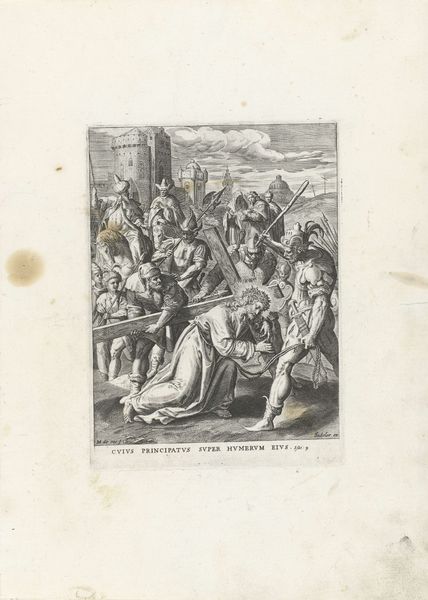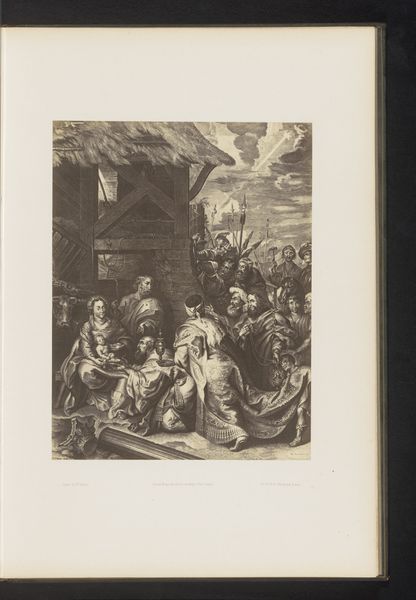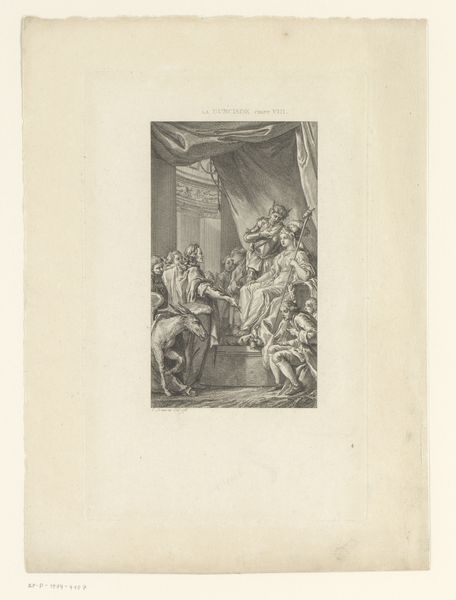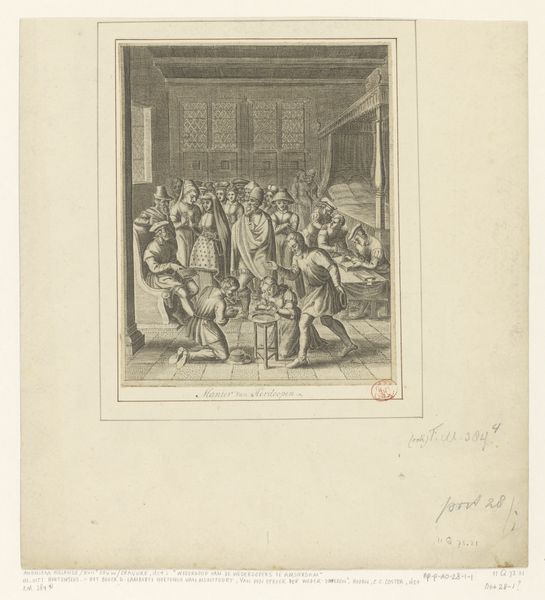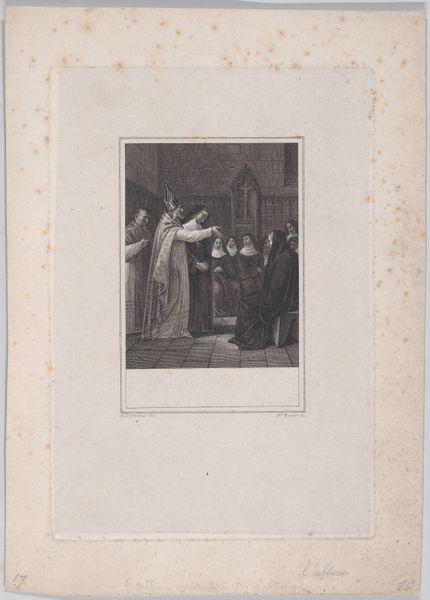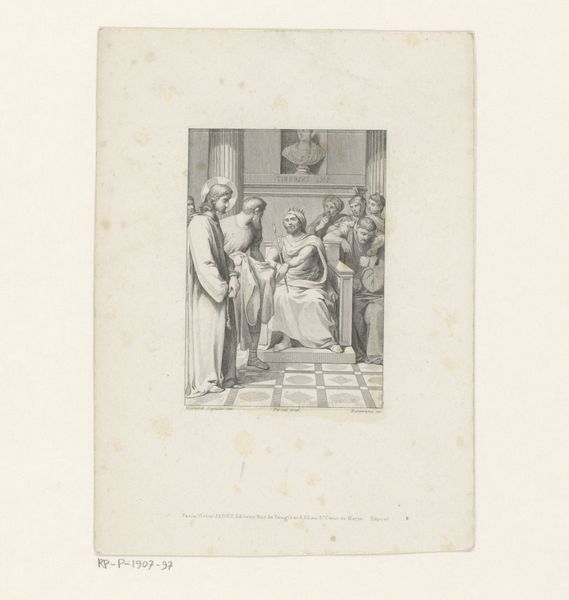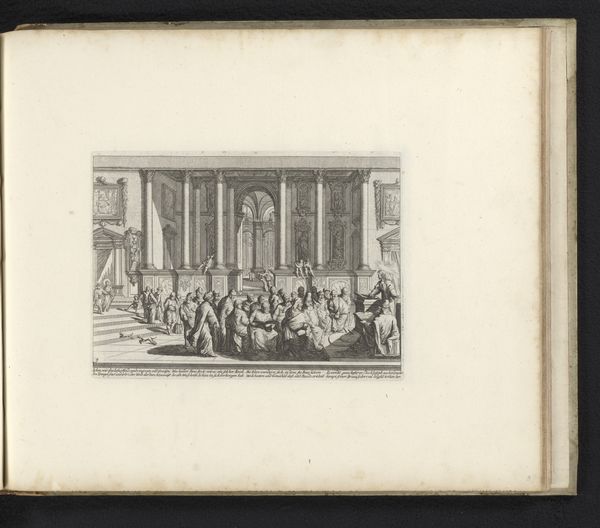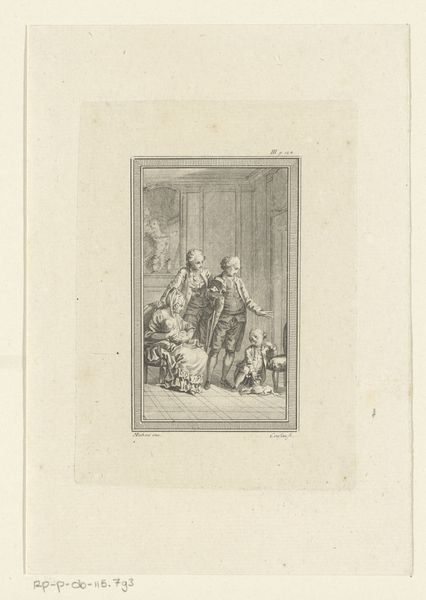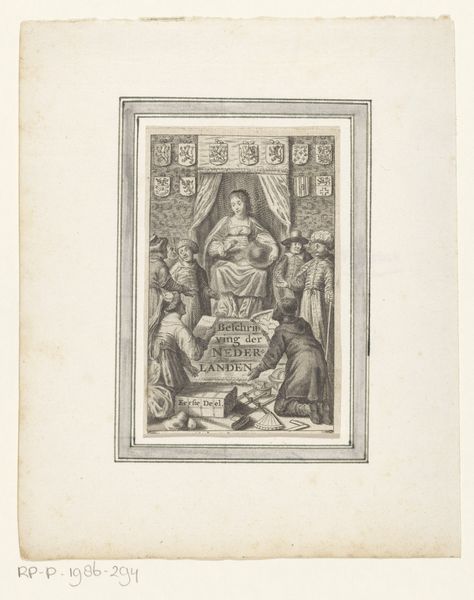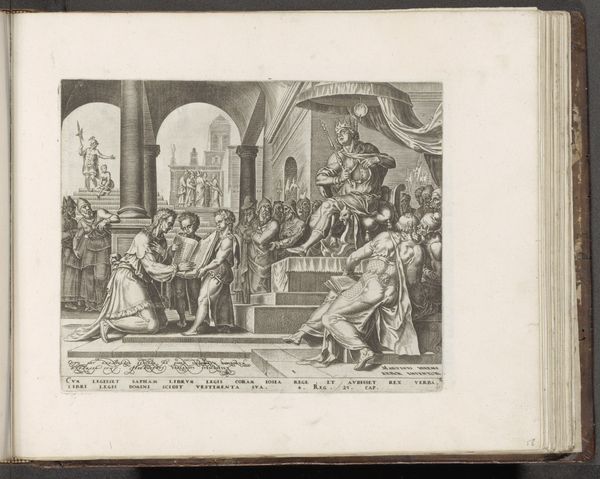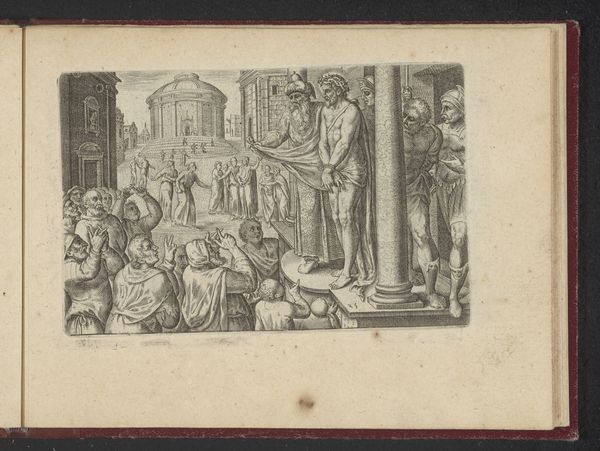
drawing, paper, ink
#
drawing
#
baroque
#
figuration
#
paper
#
ink
#
history-painting
Copyright: Rijks Museum: Open Domain
Curator: This ink and paper drawing by Abraham du Belije, crafted around 1666, depicts "The Presentation of Christ in the Temple." The Baroque style brings the biblical narrative to life with palpable emotion and dynamism. What's your initial take on this work? Editor: My immediate reaction focuses on the almost harsh, grainy quality of the ink. It emphasizes the tangible presence of each figure within that temple, but there's also a rough feel that hints at the socioeconomic realities underlying even sacred scenes. Curator: Absolutely. Viewing this through an intersectional lens reveals how depictions of religious events can reflect broader societal power structures. The focus on figuration can signal the prominence of certain roles and marginalization of others within the religious narrative and contemporary social hierarchy. How might those making such depictions like to influence us? Editor: Considering the material components: paper, ink, and the skilled labor of the artist—aren’t just materials. They’re commodities, imbued with value, which, in turn, allowed Belije to visualise this story. The patronage also tells us so much: who had the means, power and influence to bring religious stories into the hands of a wider audience at that time? Curator: Exactly. The artist is actively involved in constructing a specific narrative, consciously or unconsciously reinforcing or questioning social norms around religion, piety, and authority. Note also the contrast between those clearly wealthy central figures and those obscured at the edges, for instance. Editor: And it's not just what's depicted, but *how* it's depicted that speaks volumes about the modes of production. Ink drawings like these involve processes and time constraints quite different to larger oil on canvas, influencing circulation, consumption and reception among different tiers of the seventeenth century art market. Curator: Placing it within the context of the Baroque era is equally essential. This era often used grandeur and overt emotion to align art and religious fervour to counter the emerging concerns around secularization and new scientific modes of thought, aiming to reaffirm traditional power structures in an evolving world. Editor: Looking at the production – from materials sourced to Belije’s labor, commissioned into this tangible representation - really deepens our comprehension of those forces influencing and shaping Baroque period society. Curator: This piece shows that engaging art critically with an awareness of historical narratives invites us to explore avenues to question, deconstruct, and reassess ingrained beliefs about ourselves and societies. Editor: Ultimately, Belije’s drawing serves as a potent reminder that material and technique choices can give us unique insight into social hierarchies. By paying closer attention to artistic labor, what's been produced helps unpack its meanings, allowing us to have a deeper appreciation of the time and circumstances when the artist and patrons lived and worked.
Comments
No comments
Be the first to comment and join the conversation on the ultimate creative platform.
